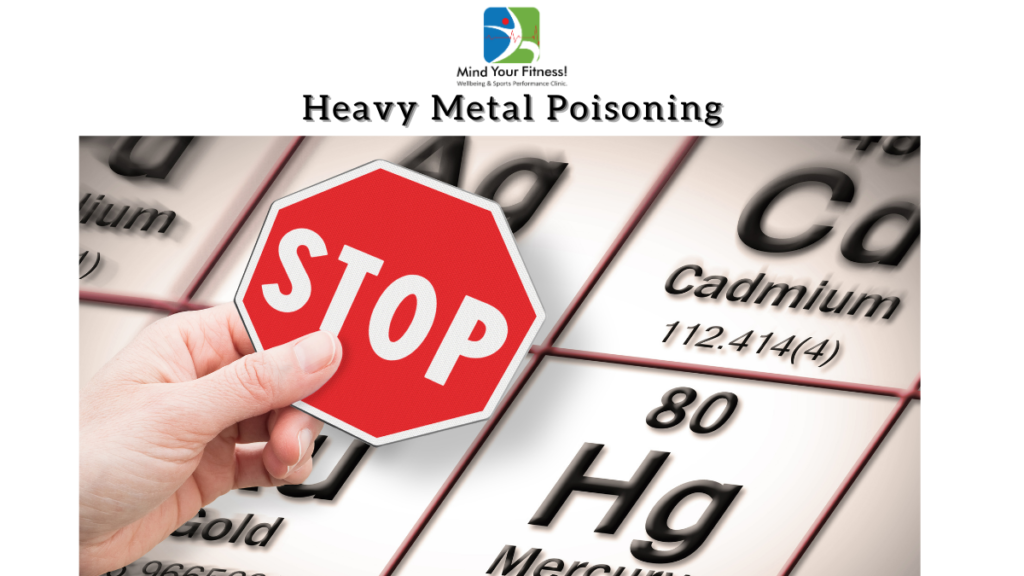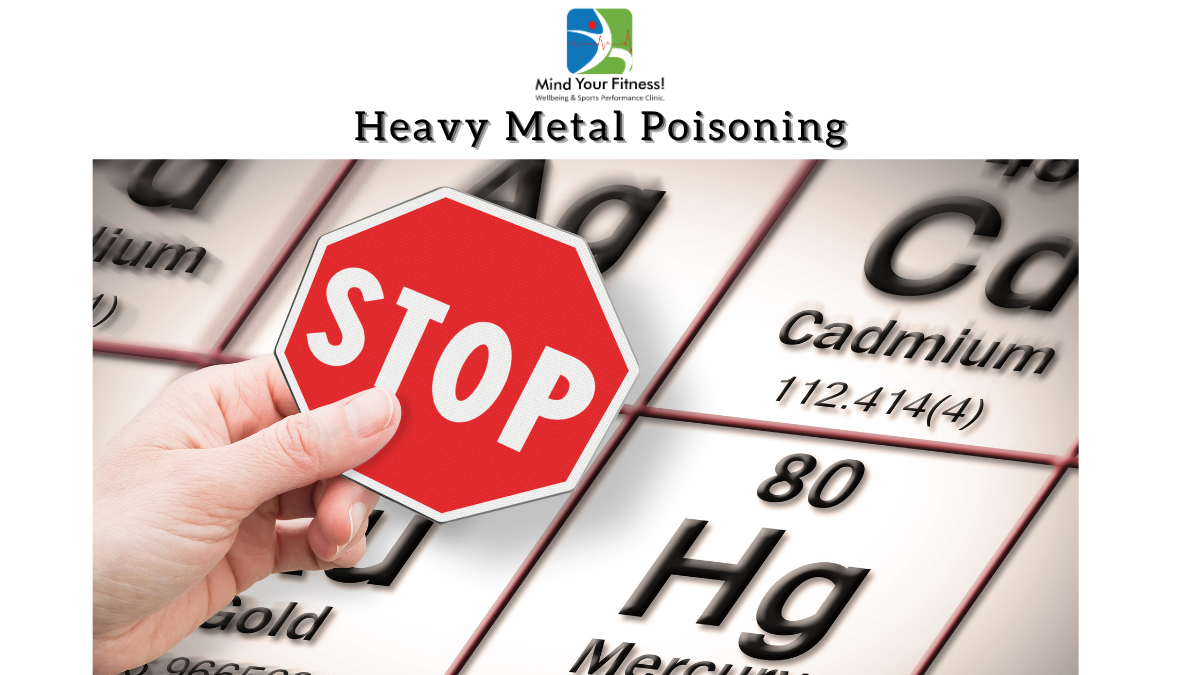
The heavy metals most commonly associated with poisoning of humans are lead, mercury, arsenic and cadmium. It may also occur as a result of industrial exposure, air or water pollution, food/containers, and through medicines. A blood test can detect the following 22 elements and their levels in the body
- Lead:
Causes– Lead poisoning may be caused by exposure to deteriorating lead paint in older houses, contamination of water from lead pipes. Additional causes include calcium products, progressive hair dyes, kajal, Surma, kohl, and digestive remedies.
Signs and symptoms- In adults, overexposure to lead may cause high blood pressure and damage to the reproductive organs. Additional symptoms may include fever, headaches, fatigue, sluggishness, digestive/neurological issues, joint pain, insomnia, decreased muscle strength and endurance; kidney disease and behavioural changes such as hostility, depression, and/or anxiety.
- Mercury:
Causes– Mercury poisoning may be caused by exposure to large amounts of mercury in the manufacturing of thermometers, mirrors, incandescent lights, x-ray machines, and vacuum pumps. Another cause of mercury poisoning is contaminated water and fish.
Signs and symptoms– General symptoms include fatigue, depression, sluggishness, irritability, skin changes and headaches.
Respiratory symptoms associated with inhalation to mercury vapours include coughing, breathlessness, tightness or burning pain in the chest, and/or respiratory distress.
Nervous system: There may be behavioural, sensory and neurological changes associated with overexposure to mercury poisonings, such as excitability and quick-tempered behaviour, lack of concentration, and loss of memory. Shock and permanent brain damage may also result. Additional symptoms include non-inflammatory degenerative disease of the nerves, tremors in the limbs and, in some cases, seizures and/or slurred speech. In rare cases, a personality disorder known as erethism or mad hatter syndrome may occur.
Digestive symptoms: In some cases, affected individuals may experience stomach and intestinal disturbances, inflammation of the gums, accompanied by vomiting and/or abdominal cramps with bloody stools.
- Arsenic:
Causes– Arsenic poisoning may be caused by medications including Fowler’s solution (potassium arsenite) and some topical creams used in the treatment of some skin conditions. Ingestion of herbicides, insecticides, pesticides, fungicides, or rodenticides containing arsenic may cause arsenic poisoning. Arsenic is also found in contaminated water, seafood, and algae.
Signs and symptoms– Overexposure may cause neurological and digestive complications. Other symptoms include the breakdown of the haemoglobin of red blood cells, anaemia and low blood pressure. Some individuals may experience a garlic-like odour that may be detectable on the breath.
The onset of symptoms in chronic arsenic poisoning is about two to eight weeks after exposure.
- Cadmium:
Causes- Cadmium poisoning may be caused by ingestion of food (e.g. grains, cereals, and leafy vegetables) and cigarette smoke.
Signs and symptoms– The onset of symptoms may be delayed for two to four hours after exposure. Overexposure may cause neurological and digestive complications. In addition, progressive loss of lung function may also be present. In some cases, affected individuals may exhibit increased salivation, yellowing of the teeth, an unusually rapid heartbeat, anaemia and/or an impaired sense of smell, kidney or liver damage, and/or softening of bones.
Additional metals that may cause poisoning include the following: Common symptoms of poisoning from these metals cause gastrointestinal/ renal disturbances and neurological symptoms such as headaches, irritability, psychosis, stupor, coma, and convulsions.
- Chromium: When hexavalent chromium enters the bloodstream, it damages blood cells by causing oxidation reactions. It can be found in some dyes and paints, as well as in some leather tanning products. Primer paint containing hexavalent chromium is widely used in aerospace and automobile refinishing applications. Metalworkers (such as welders), as well as people with surgical implants made from cobalt-chromium alloy, may also be exposed to hexavalent chromium.
- Barium: Barium poisonings are uncommon and usually result from accidental contamination of food sources, suicidal ingestion, or occupational inhalation exposure. Barium salts are found in fireworks, ceramic glazes, and rodenticides and are used in the manufacture of glass and in dyeing textiles. Barium may also enter the air during mining and refining processes, the burning of coal and gas, and the production of barium compounds.
- Caesium: You could be exposed to caesium through the air, water water, food, or through skin contact. The source is radioactive waste.
- Uranium: The occupations most heavily exposed to uranium are those employed in mining and milling operations, or in uranium enrichment and processing activities. The most common nonoccupational exposures occur from exposure to naturally occurring uranium sources such as contaminated well water.
- Strontium: Poisoning occurs through food, water, or accidentally eating soil or dust that contains radioactive strontium (nuclear accidents). It can cause weakening of bones. Naturally occurring strontium found in cereals, grains, seafood is not hazardous.
- Antimony: Antimony is used for hardening lead and in the manufacture of batteries and cables. Toxicity may possibly cause lung disease and skin cancer, especially in those who smoke.
- Tin: Tin compounds can enter your body from nearby hazardous waste sites by exposure to contaminated air, food, water, and when you touch or accidentally consume soil that has tin in it, or when you breathe tin containing fumes or dust. It is used to line cans for food and aerosols. It is also present in toothpaste, perfumes, soaps, colouring agents, food additives, and dyes. It is used in making plastics, pesticides, paints, wood preservatives, and rodent repellants.
- Molybdenum: Molybdenum is an essential element. It’s a co-factor for several enzymes that break down and detoxify many harmful compounds. The ability of your body to store molybdenum is affected by the amount of copper and sulfate in your diet. Molybdenum toxicity is associated with copper intake or depleted copper stores in the body, humans who have an inadequate intake of dietary copper or some dysfunction in their copper metabolism could be at greater risk of molybdenum toxicity. Foods that have molybdenum include legumes, cereals, and leafy vegetables. Too much molybdenum can cause the gout-like syndrome.
- Silver: Silver’s wide variety of uses allows exposure through various routes of entry into the body. Ingestion is the primary route of entry for silver compounds. Inhalation of fumes and skin contact occurs in occupational settings (photography, mirrors, batteries) or from the application of burn creams. Silver can also gain entry into the body through the use of acupuncture needles, catheters and dental amalgams.
- Vanadium: Vanadium compounds are not regarded as a serious hazard, however, workers exposed to industrial vanadium peroxide dust (eg., alloys used in jet engines and high-speed airframes, axles, crankshafts, gears, nuclear reactors). The uptake of vanadium by humans mainly takes place through food, such as buckwheat, soya beans, olive oil, sunflower oil, apples and eggs. When vanadium uptake takes places through the air it can cause bronchitis and pneumonia.
- Nickel: Human exposure to nickel occurs primarily via inhalation and ingestion and is particularly high among nickel metallurgy workers (alloys are used in making coins, stainless steel, wiring, detergents, cookware, batteries, surgical implants, faucets etc). In addition, implantation of nickel-containing prostheses and administration of nickel-contaminated medications leads to significant IV exposures.
- Aluminium: Exposure occurs through aluminium containers, cosmetics and medicines, and also for water purification. Overexposure to aluminium may cause brain damage.
- Selenium: It is most frequently seen in some parts of India, in which there are naturally high levels of selenium in the soil, which becomes incorporated into the plants that are farmed there. Less commonly seen are people who intentionally/accidentally overdose on dietary supplements or rarely in certain occupations (e.g. metal processing industry).
- Bismuth: Metallic bismuth and bismuth compounds have been widely used in the manufacture of alloys, pigments, cosmetics, and pharmaceuticals(surgical dressings and in the treatment of gastric and duodenal ulcers). Toxicity is associated primarily with over-dosage to bismuth-based drugs.
- Cobalt-Oral intake of supplements and internal exposure through metal-on-metal (MoM) hip implants deliver the highest risks of cobalt toxicity. Substantial exposure of cobalt can occur through the respiratory system, especially in people who are employed in the heavy metal industry producing and using cobalt (industries preparing hard metals, diamond polishing, and recovering cobalt powders).
- Manganese- via Toxicity occurs industrial exposure: Manganese is used as a purifying agent in the production of several metals.
- Thallium- More current uses of thallium are in the semiconductor and optical industries. Thallium is used in rat poison and because it is both odourless and tasteless, be used as a criminal poison in some cases. In Africa, it has been used as a pesticide, which has led to food contamination. Chinese herbal medications also have been found to be contaminated. Intoxication occurs by cumulative intake through the skin, respiratory, and gastrointestinal tracts. Accidental snorting/injection by drug abusers have been reported.
- Beryllium- Beryllium is a metal that is used in the manufacturing of products/industries like cars, golf clubs, aerospace, biomedical, defence, energy and electrical, fire prevention, and computers. While the solid metal is safe, lung disease can occur when beryllium dust or fumes are inhaled. It also accumulates in the subcutaneous fatty tissue of these fish.
~ Mayuri Mangire, Clinical Nutritionist, Mind Your Fitness!





